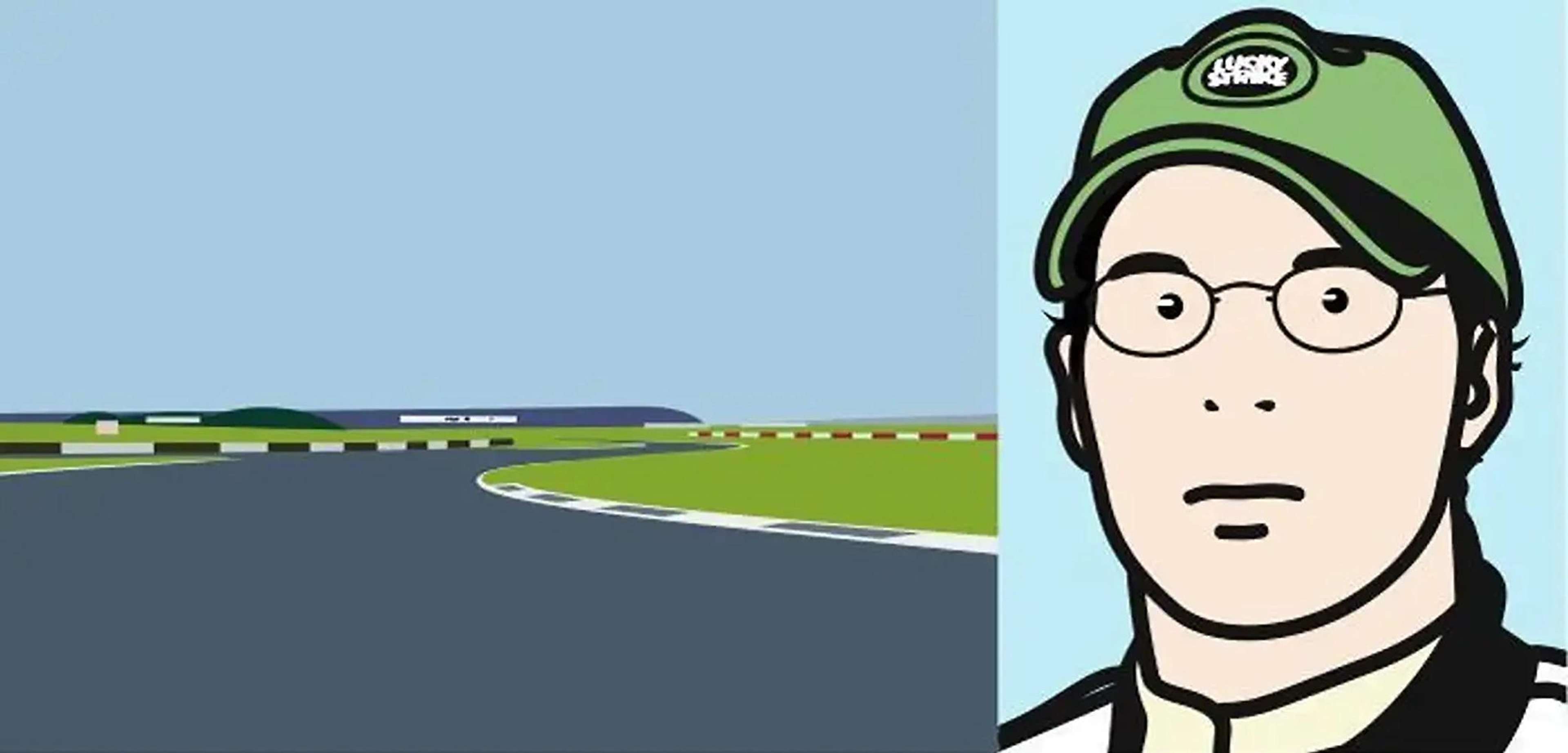Imagine You Are Driving (Fast) /Jacques

Imagine You Are Driving (Fast) /Jacques
Signed Print
Julian Opie
£1,900-£2,800
$3,800-$5,500 Value Indicator
$3,500-$5,000 Value Indicator
¥18,000-¥26,000 Value Indicator
€2,200-€3,200 Value Indicator
$20,000-$29,000 Value Indicator
¥390,000-¥580,000 Value Indicator
$2,550-$3,750 Value Indicator
There aren't enough data points on this work for a comprehensive result. Please speak to a specialist by making an enquiry.
56 x 115cm, Edition of 40, Digital Print
Auction Results

Track auction value trend
Meaning & Analysis
Imagine You Are Driving (Fast)/Jacques is a digital print from Julian Opie’s Imagine You Are Driving (Fast) series from 2002, showing a portrait of the Canadian Formula 1 driver Jacques Villeneuve alongside an image of an open racetrack. The portrait of Villeneuve is typical of Opie’s pared-back style that uses thick bold lines, simplified shapes, block colours and minimised features.
The large expanse of tarmac on the right side of the print takes up about two thirds of the print, showing white lines and track markings that follow the rules of perspective to the slightly off-centre vanishing point. By pairing the portrait of Villeneuve with the racetrack landscape, the viewer is immediately made aware of who’s viewpoint we are seeing in the landscape.
Although the human presence is made clear in this print, Opie’s highly abstract and depersonalised style works to create the effect of a contemporary videogame, inviting the viewer to imagine their own virtual journey on this racetrack. Throughout the Imagine You Are Driving (Fast) series Opie works to create a slick, computer-generated image surface, Opie allows for a level of disengagement with the scenes. This level of depersonalisation subsequently invites the viewer to project their own personal emotions, memories and ideas onto the scene, thus filling in the blanks of the narratives that are to be read in Opie’s works.